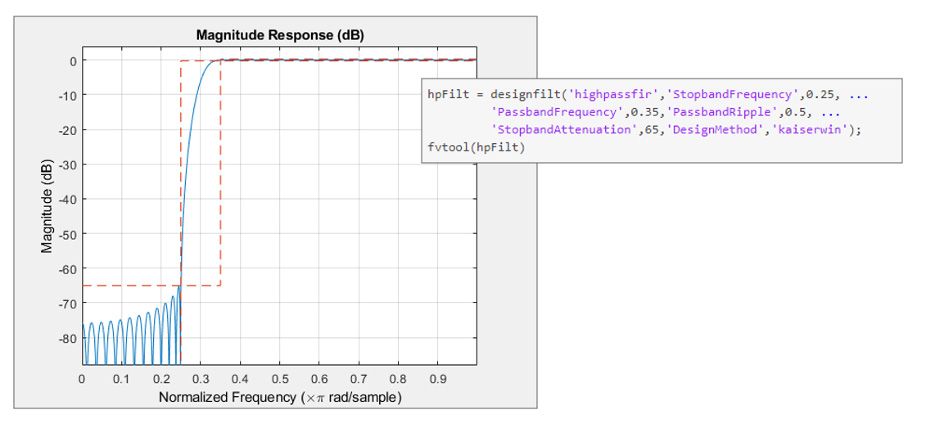In the realm of audio processing, filters play an essential role in shaping and enhancing sound. One type of filter that is commonly used is known as a low pass filter. In this article, we will explore the function of a low pass filter and its significance in audio processing.
A low pass filter is designed to allow low-frequency sounds to pass through while attenuating or reducing the amplitude of high-frequency sounds. It allows only frequencies below a certain cutoff frequency to pass, effectively removing or reducing high-frequency noise or unwanted signals.
The primary purpose of a low pass filter in audio processing is to control and shape the frequency response of a signal. By removing unwanted high-frequency components, it helps improve the overall clarity and quality of the audio signal.

Credit: www.mathworks.com
Applications of Low Pass Filters in Audio Processing
Low pass filters find application in various audio processing scenarios:
- Noise Reduction: High-frequency noise can be introduced during the recording or transmission of audio signals. By using a low pass filter, the noise can be effectively attenuated or removed, resulting in cleaner audio.
- Speaker Protection: In audio systems, it is essential to protect the speakers from handling frequencies they cannot reproduce accurately. By incorporating a low pass filter, the high-frequency content beyond the speaker’s range is filtered out, preventing potential damage.
- Bass Enhancement: Low pass filters are also used to enhance the bass response in audio systems. By allowing only the low-frequency components to pass through, the bass becomes more pronounced, resulting in a more dynamic and impactful listening experience.
- Equalization: In audio mixing and mastering, low pass filters are frequently used as part of the equalization process. By adjusting the cutoff frequency, the overall tonal balance of the audio can be manipulated, achieving the desired frequency response.
Types of Low Pass Filters
There are different types of low pass filters used in audio processing:
- Butterworth Filter: This filter type has a maximally flat frequency response within its passband and is commonly used for applications where a smooth transition between frequency ranges is required.
- Chebyshev Filter: A Chebyshev filter allows for steeper roll-off characteristics but may introduce some ripples in the passband. It is often used in situations where a sharper cutoff is desirable.
- Bessel Filter: Bessel filters offer a nearly linear phase response while maintaining a moderate roll-off slope. They are frequently used in audio applications where preserving phase integrity is crucial.
- Elliptic Filter: An elliptic filter offers a combination of stopband attenuation and passband ripple characteristics. It is often used when a rapid transition between the stopband and passband is required.

Credit: www.izotope.com
Frequently Asked Questions Of What Is The Function Of A Low Pass Filter In Audio Processing?
What Is A Low Pass Filter Used For In Audio Processing?
A low pass filter is used to allow low-frequency signals to pass through while attenuating higher frequencies. It helps remove unwanted noise from audio signals.
How Does A Low Pass Filter Improve Audio Quality?
By removing high-frequency noise and interference, a low pass filter helps to create a cleaner, clearer, and more pleasant sound experience for listeners.
What Types Of Audio Signals Can Benefit From A Low Pass Filter?
Any audio that contains unwanted high-frequency noise, such as background hiss or interference, can benefit from the use of a low pass filter.
When Should A Low Pass Filter Be Applied In Audio Processing?
A low pass filter should be applied when you want to remove or reduce high-frequency noise without affecting the desired low-frequency components of the audio.
Conclusion
A low pass filter serves a crucial function in audio processing. By allowing only low-frequency sounds to pass through while attenuating higher frequencies, it helps shape the frequency response, reduce noise, protect speakers, enhance bass, and achieve the desired tonal balance. With different types of low pass filters available, audio professionals have the flexibility to choose the right filter for various applications.